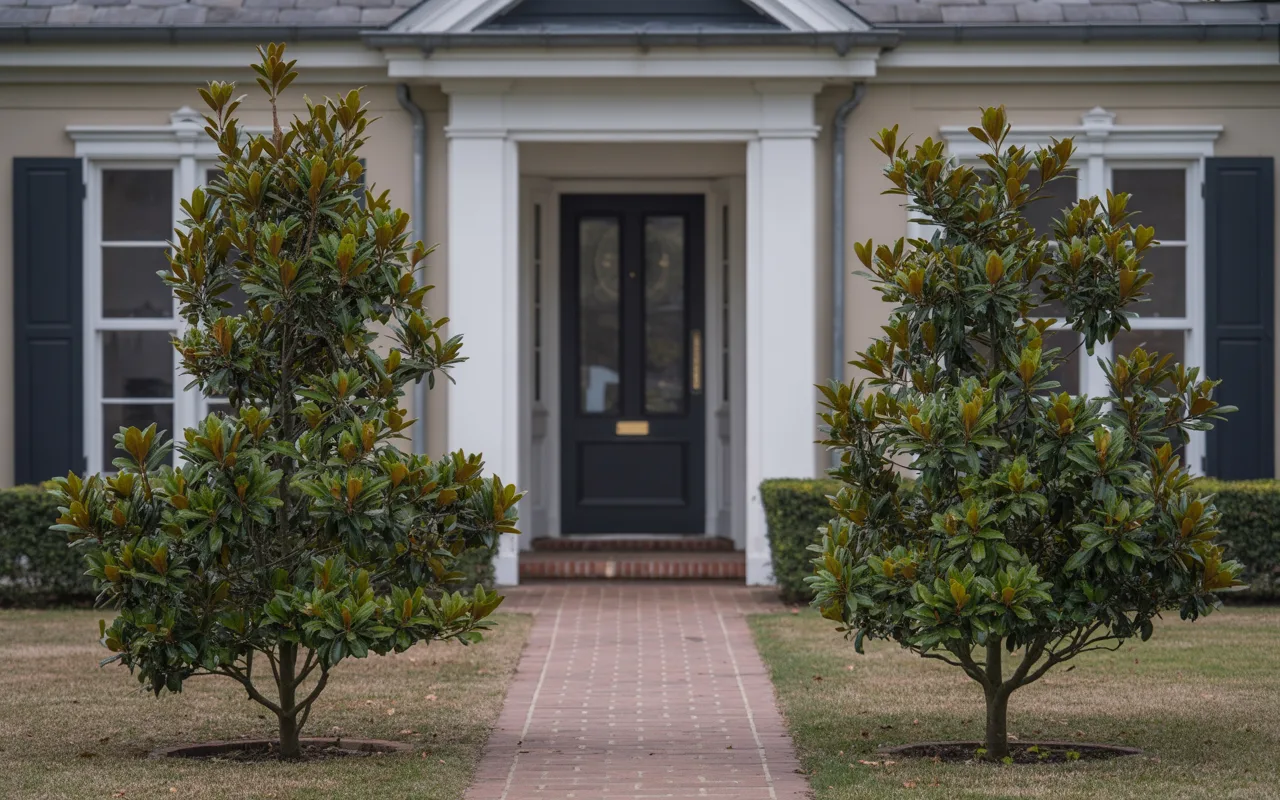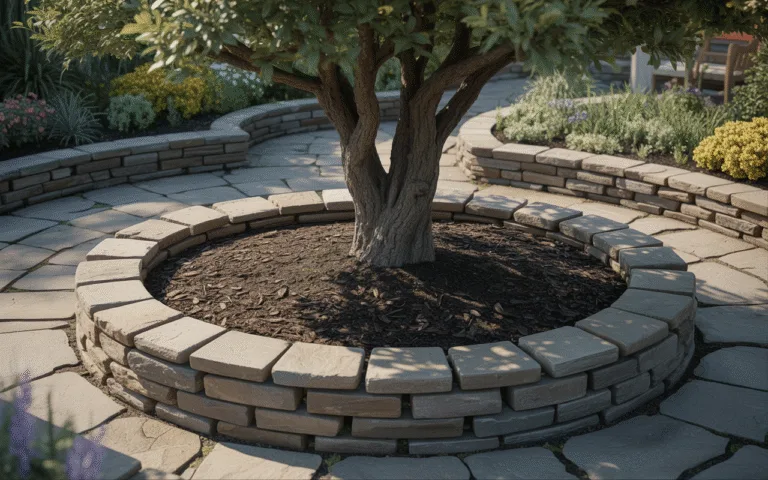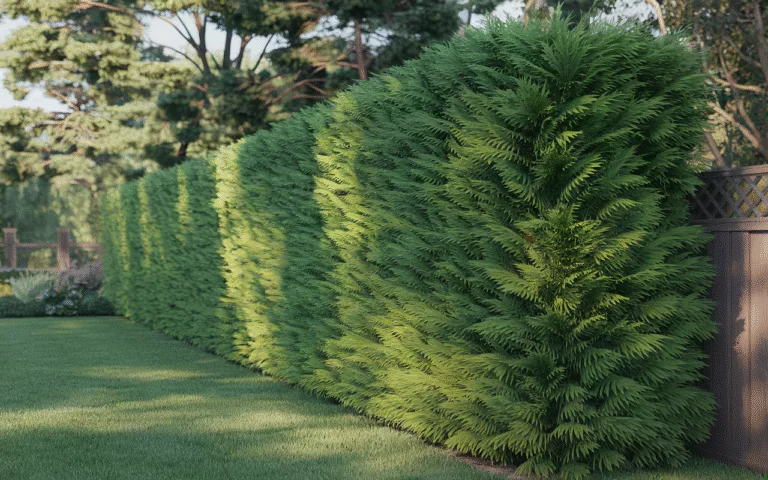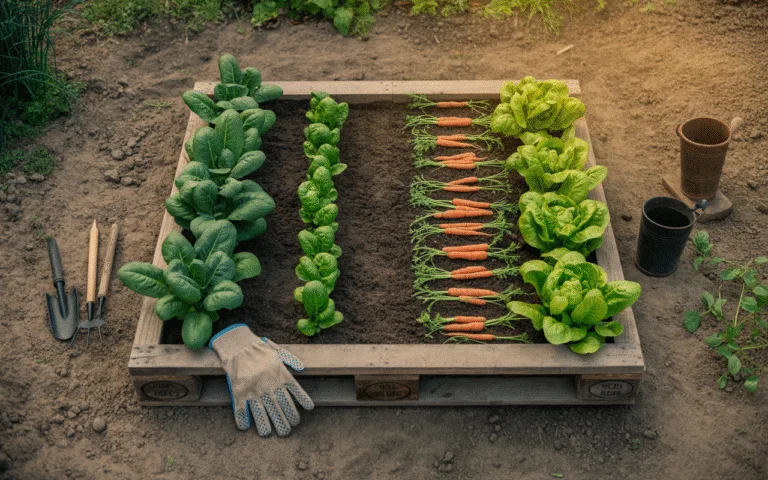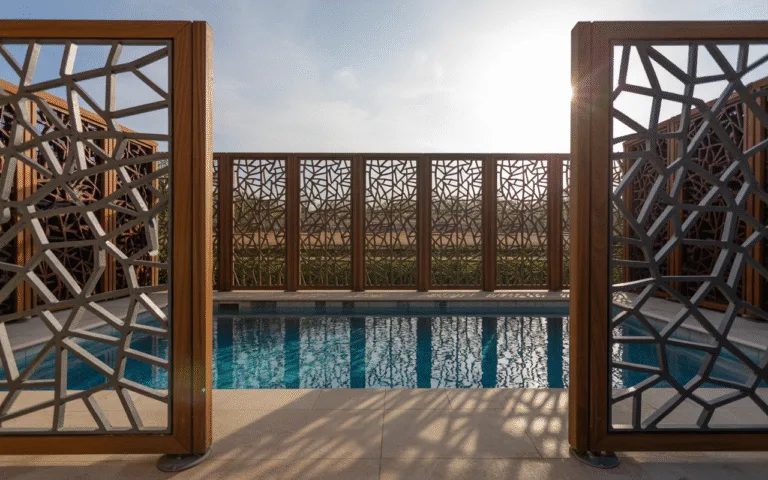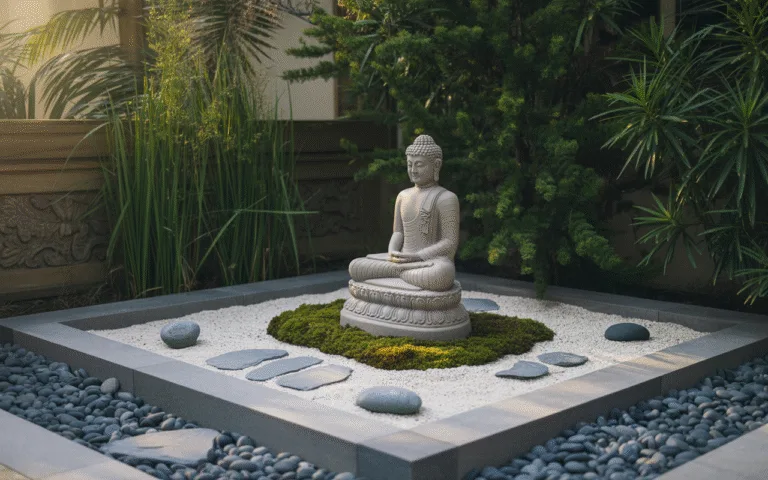15 Creative Front Yard Tree Placement Ideas to Elevate Curb Appeal
If you’ve ever stood in your front yard, tree in hand, completely frozen because you don’t know where it should go, yep, been there.
Tree placement isn’t just about tossing it in the dirt and hoping for the best.
It’s about creating structure, balance, and curb appeal without sacrificing sunlight or space.
Why Tree Placement Really Matters
Let me tell you, I once planted a gorgeous Japanese maple way too close to the driveway.
Fast-forward a couple years, hello cracked concrete and goodbye mirror on the passenger side.
Strategic tree placement can:
- Frame your home beautifully
- Provide cooling shade
- Increase privacy
- Boost your curb appeal big time
Basically, it’s like landscaping with purpose. You’re not just adding greenery, you’re crafting a vibe.
1. Frame Your Entrance with Matching Trees
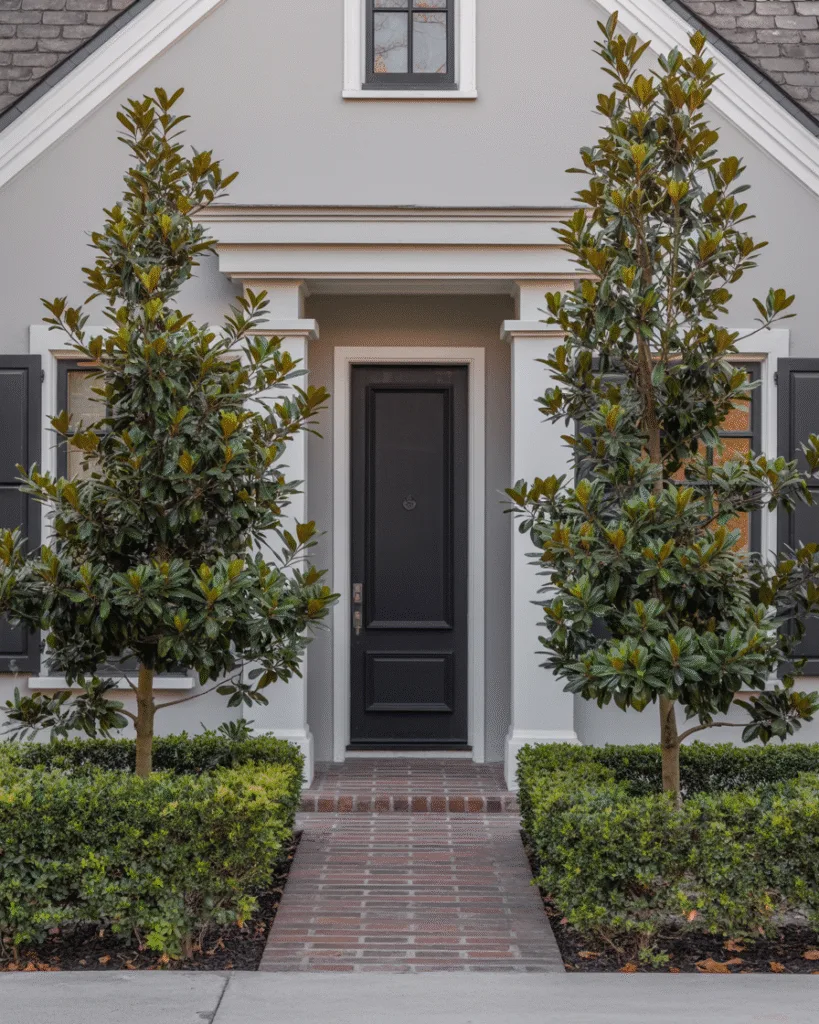
Placing trees on either side of your walkway or entry door gives your home a welcoming, symmetrical vibe. Think of it like giving your front door a leafy hug.
Break it down:
- Choose compact, ornamental trees like Dogwoods or Dwarf Magnolias
- Make sure they don’t block the entrance light or house number
- Place them at least 6-8 feet apart to allow for growth
Design Tip: Symmetry adds elegance. If your house is more formal, this is your move.
2. Use a Statement Tree as a Focal Point
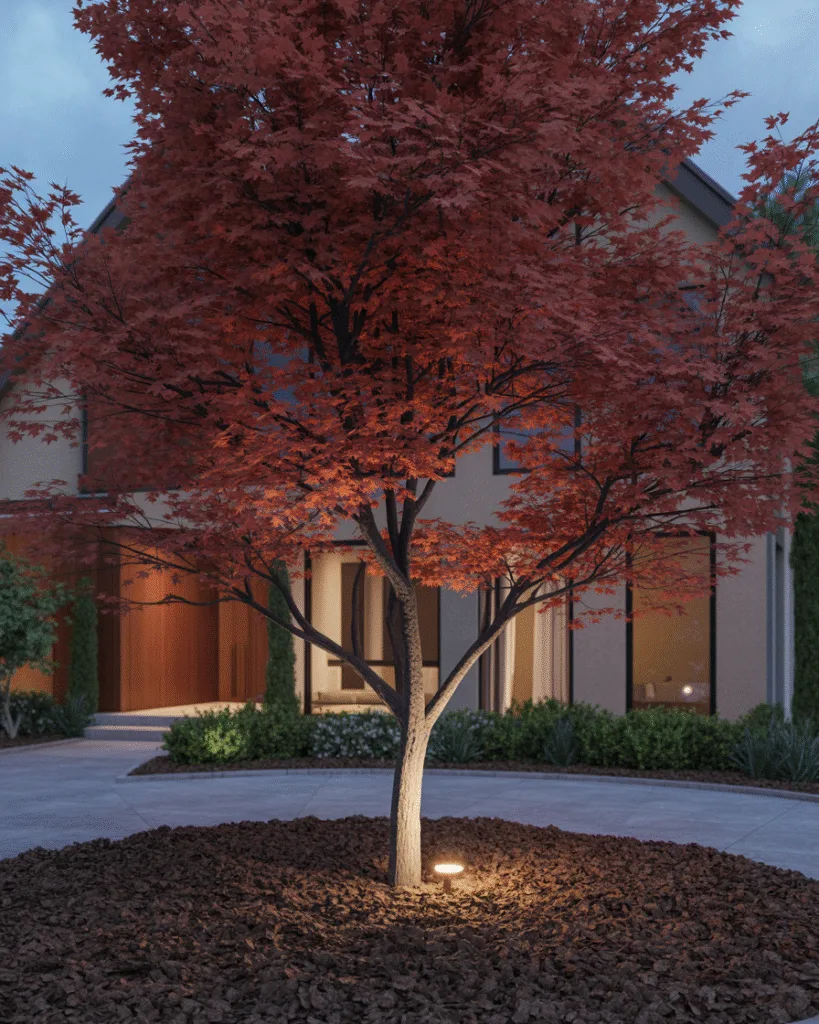
You know when a house has that one tree that makes you go, “Wow!”? That’s the power of a focal tree. It draws the eye, adds personality, and gives your yard an instant identity.
Key tips:
- Go bold with crape myrtles, red maples, or flowering cherries
- Position it off-center, away from structures
- Make sure there’s plenty of room for it to shine solo
Bold Idea: Add an uplight underneath for a stunning evening effect.
3. Shade the Driveway (and Your Car!)
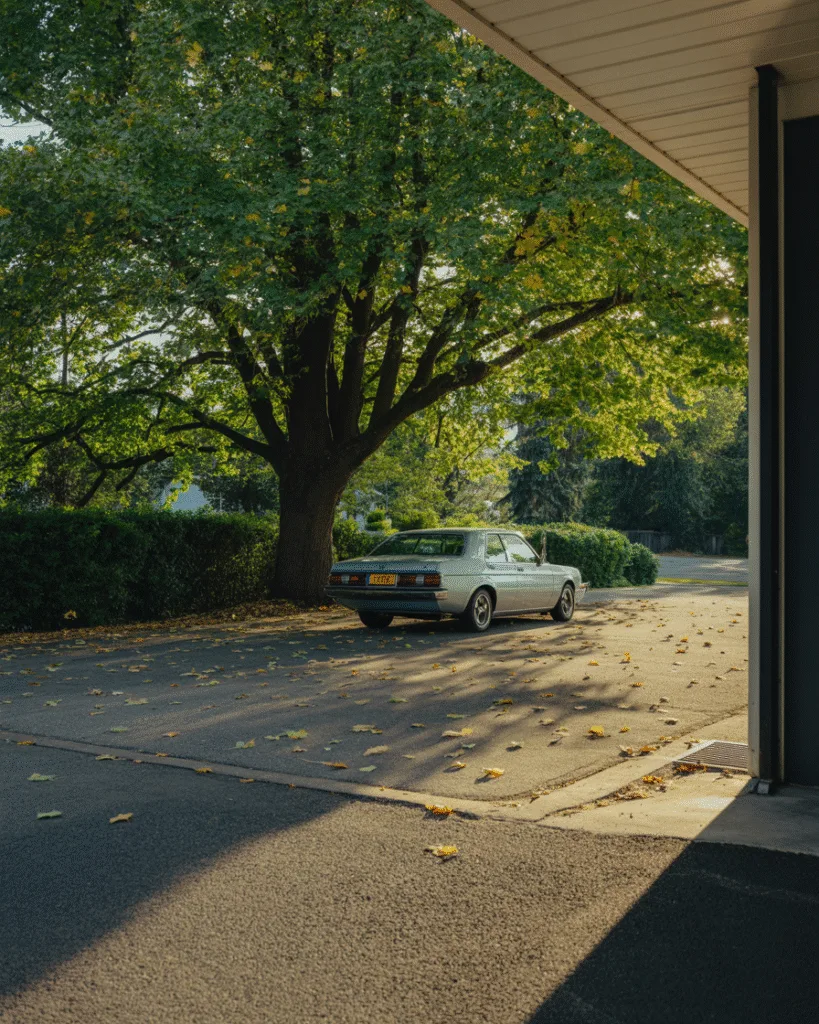
We all know the pain of grabbing a steering wheel that feels like lava. Planting a tree near your driveway helps cool things down and keeps your car from becoming a mobile oven.
Here’s how to make it work:
- Choose medium to large deciduous trees like elms or oaks
- Make sure it’s planted at least 6-10 feet from the driveway edge
- Trim branches to maintain visibility when backing out
Bonus: Falling leaves in autumn = aesthetic driveway selfies.
4. Add Privacy with Corner Trees
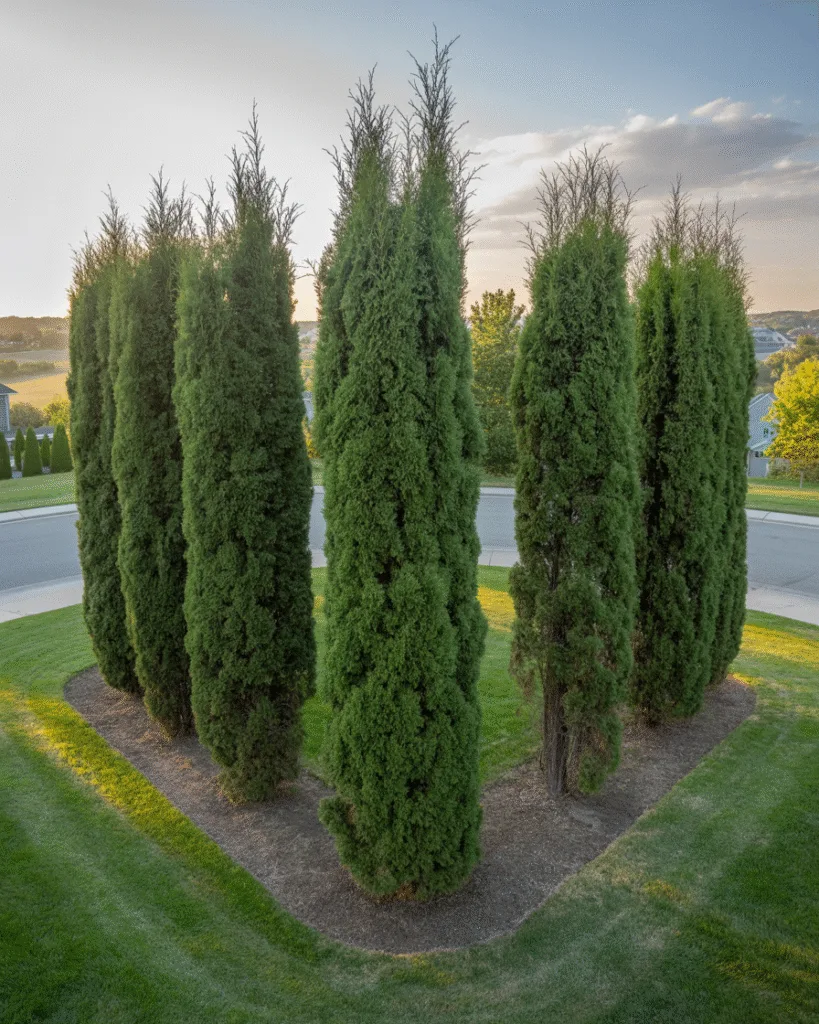
If your front yard feels a little too open to the world, corner trees can act like natural privacy fences without boxing you in.
What works:
- Place evergreens or tall ornamental trees at the far corners of your lot
- Stick to varieties that grow narrow and tall, like columnar junipers or sky pencils
- Plant in odd numbers for a natural, less formal look
Key Benefit: Adds privacy and softens hard edges of fences or walls.
5. Soften the Edges of Your Home
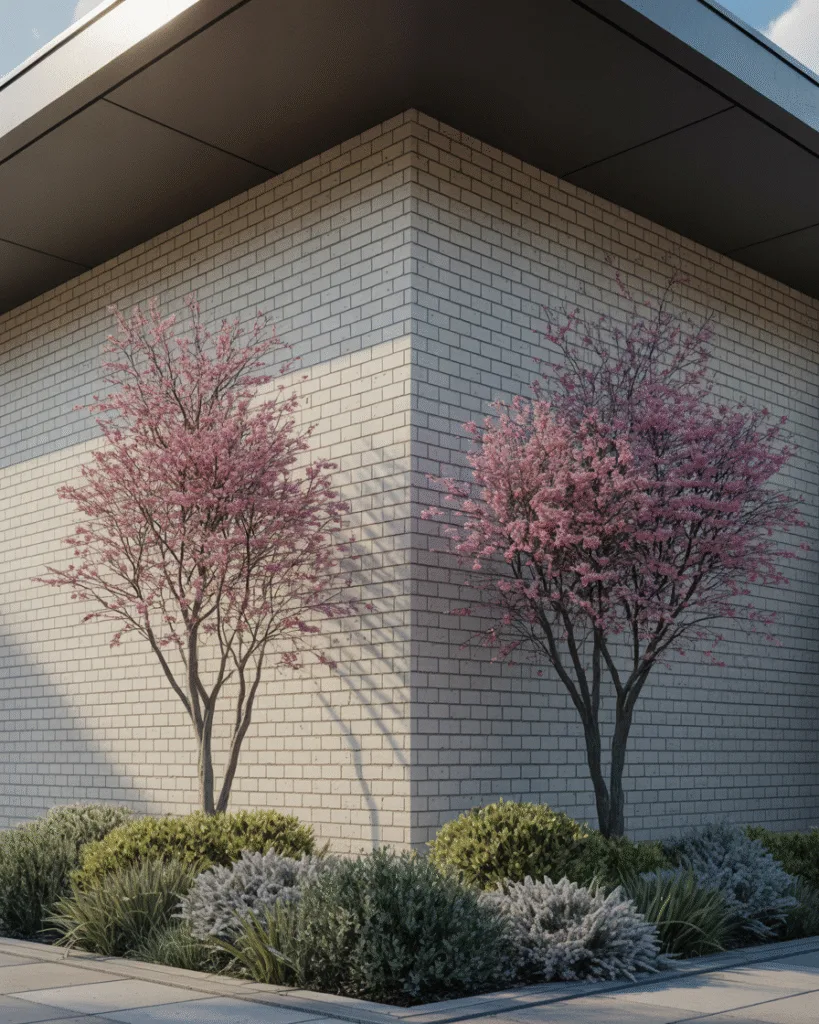
Big blank walls on the side of your home? Trees to the rescue. Placing trees near the corners of your house helps blend it into the landscape and makes it feel grounded.
Best practices:
- Pick multi-stemmed or soft-branching trees like serviceberry or redbud
- Leave 4-6 feet of breathing room from the house
- Combine with layered shrubs for even more depth
Design Tip: Vary tree height and texture to avoid a flat look.
6. Line the Walkway with Mini Trees

A tree-lined path to the door? Chef’s kiss. It creates a garden-style entrance that feels lush and welcoming, without taking up too much space.
Make it magical:
- Use dwarf varieties like crabapple or Japanese lilac trees
- Space them at least 4-5 feet apart
- Keep the trunks tidy so you don’t block the path
Style Note: Underplant with low ground cover or mulch rings for a polished look.
7. Highlight Garden Beds with a Central Tree
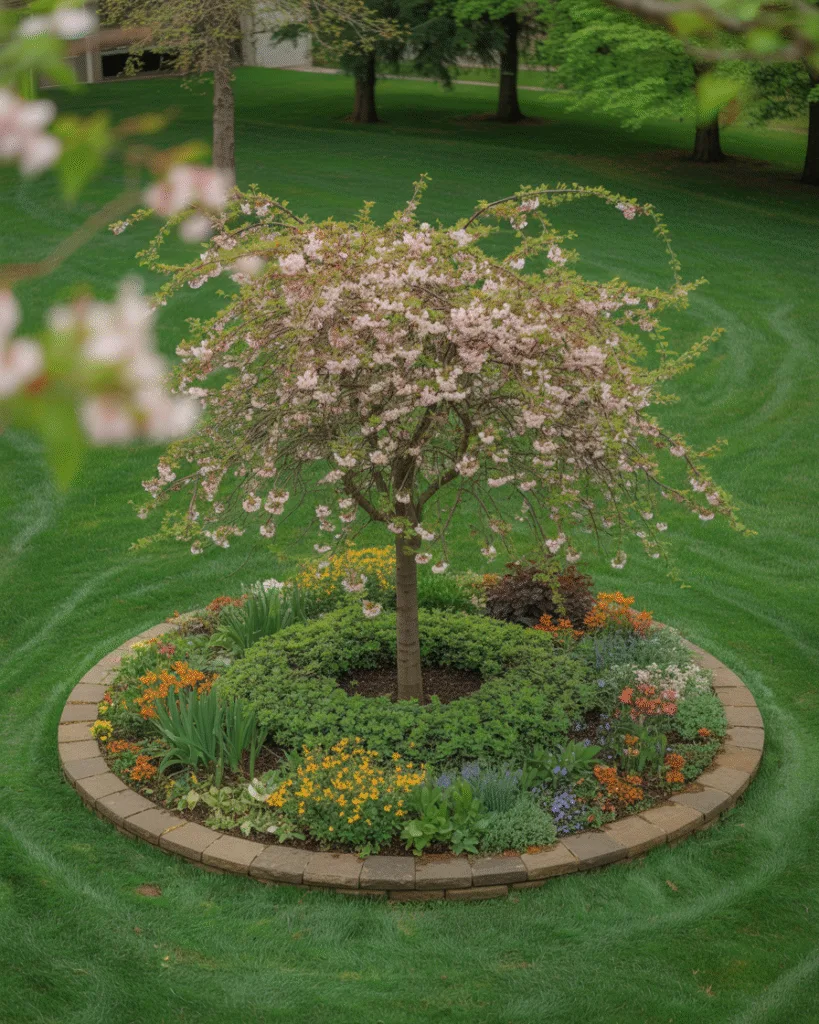
If you already have a flower bed or island garden in the middle of your lawn, adding a small tree in the center gives it height, structure, and year-round interest.
What works best:
- Try ornamental trees like weeping cherry, fringe tree, or smoke bush
- Plant in raised beds or mounds to elevate their presence
- Surround with layered plants for a tiered effect
Pro Tip: Make sure the tree’s root system won’t compete too hard with your flowers.
8. Mix Trees Into Foundation Plantings
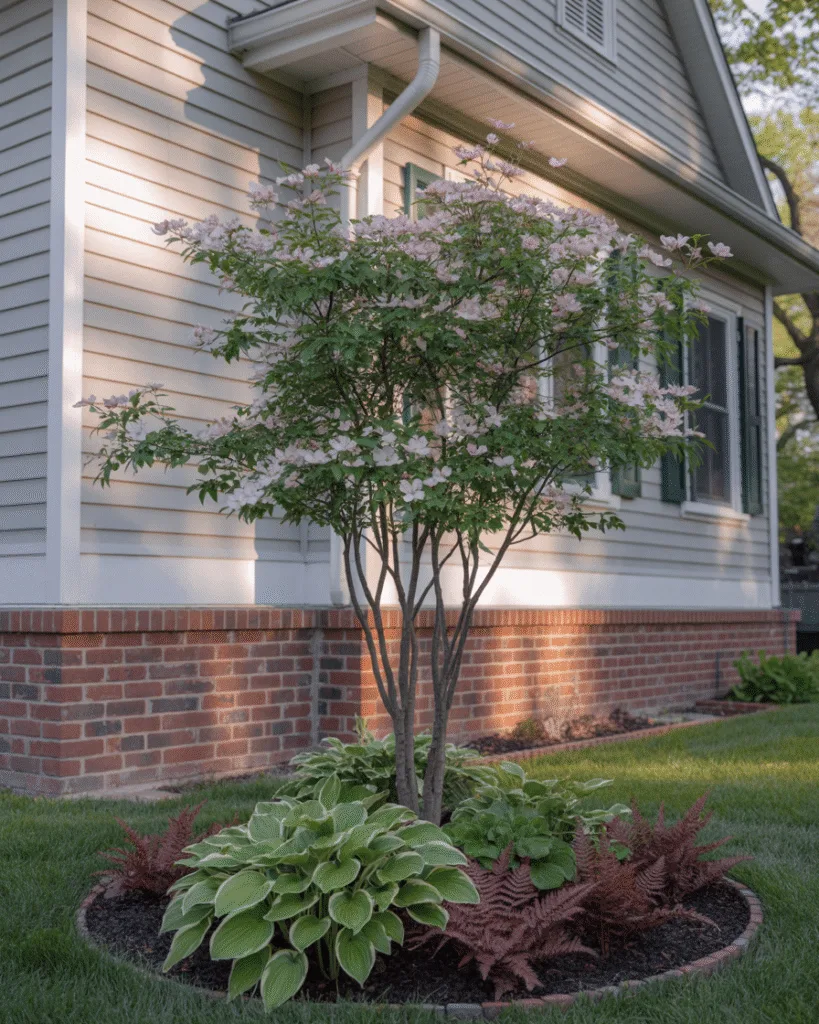
Most people focus on shrubs when landscaping around the house foundation. But adding a tree (or two) can give that area dimension and draw the eye upward.
What to do:
- Choose slow-growing trees with shallow roots
- Keep them at least 3-5 feet from the foundation
- Combine with hostas, ferns, or flowering perennials
Keep in Mind: Avoid trees with invasive roots like willows or silver maples here.
9. Create a Mini Tree Grove by the Side Lawn
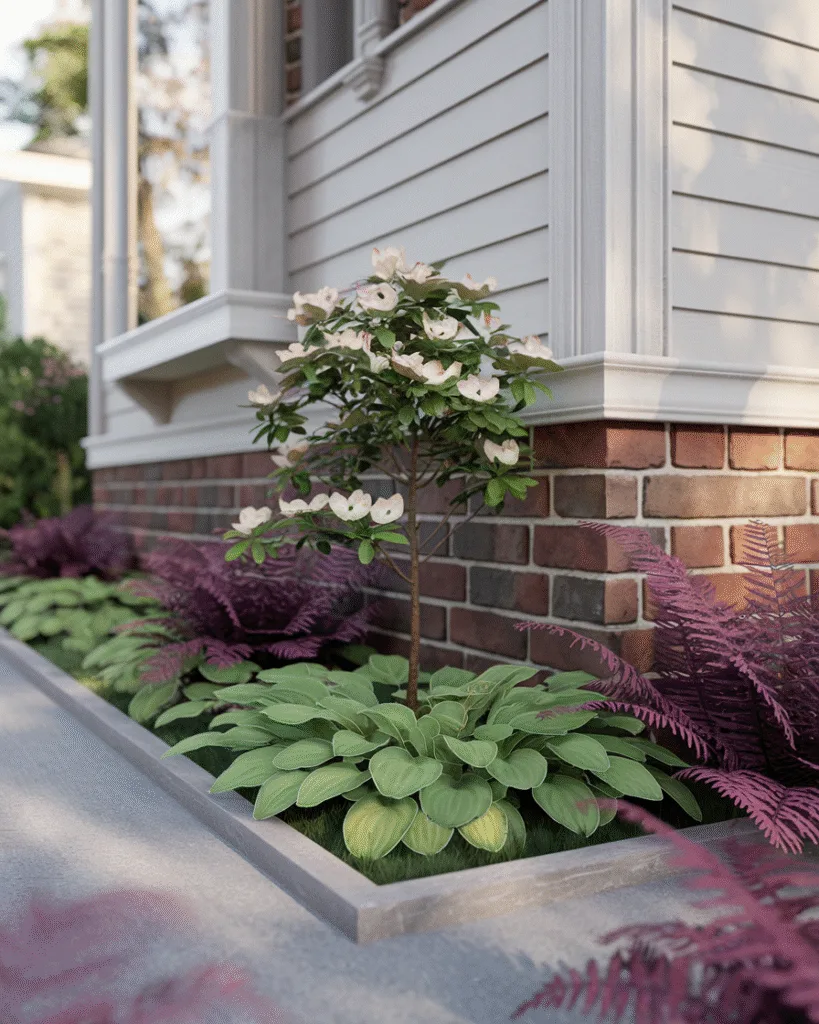
Got some unused side yard space? You can totally turn it into a mini tree grove. It’s peaceful, adds shade, and gives your yard a lush, layered look without taking over the front view.
Here’s what I suggest:
- Group 3–5 small to medium trees in a natural cluster (think dogwoods or paperbark maples)
- Space them 5–8 feet apart depending on the canopy spread
- Add mulch and some comfy seating for a cozy reading spot
Pro Tip: Stick to odd numbers—groups of 3 or 5 feel more organic than even pairs.
10. Bookend Your Lawn with Tall Trees
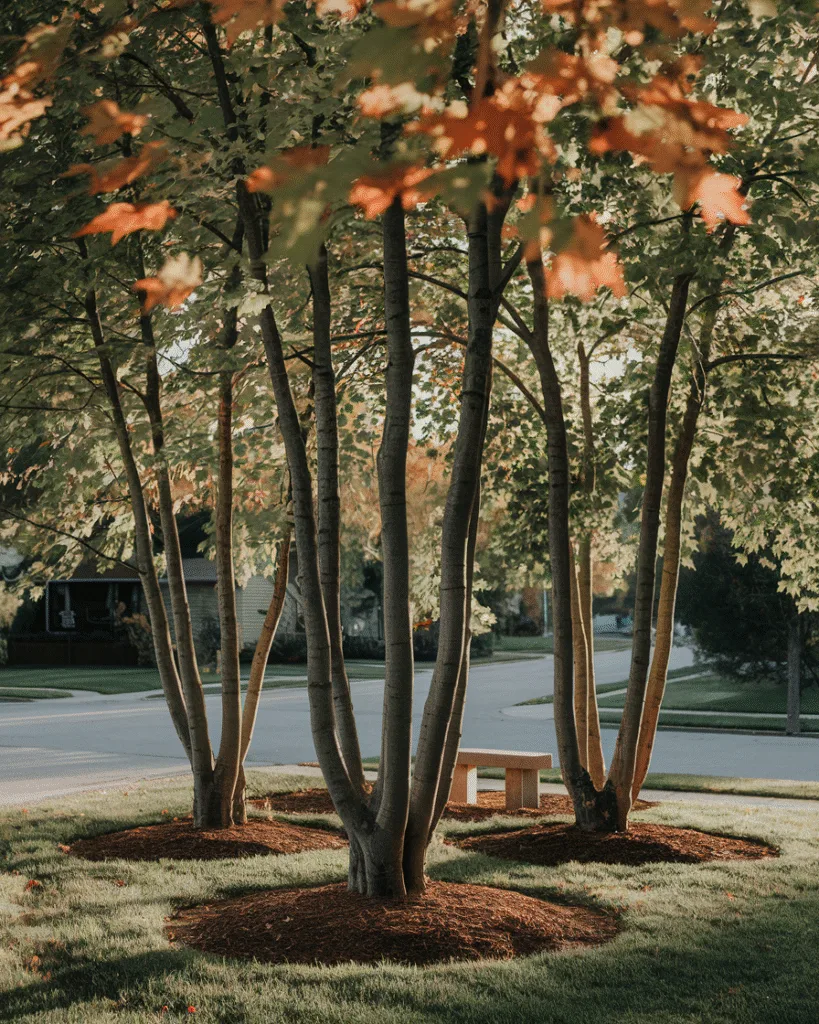
Want to give your front yard more definition without cluttering the middle? Planting tall trees on the far left and right corners creates a grounded, balanced frame.
Here’s how to do it:
- Use upright trees like tulip poplar, sycamore, or bald cypress
- Place them far enough from property lines—at least 10 feet is safe
- Keep limbs pruned high for a more open, welcoming feel
Design Tip: This works especially well with long, rectangular yards.
11. Add a Tree to Your Front Patio or Porch Zone
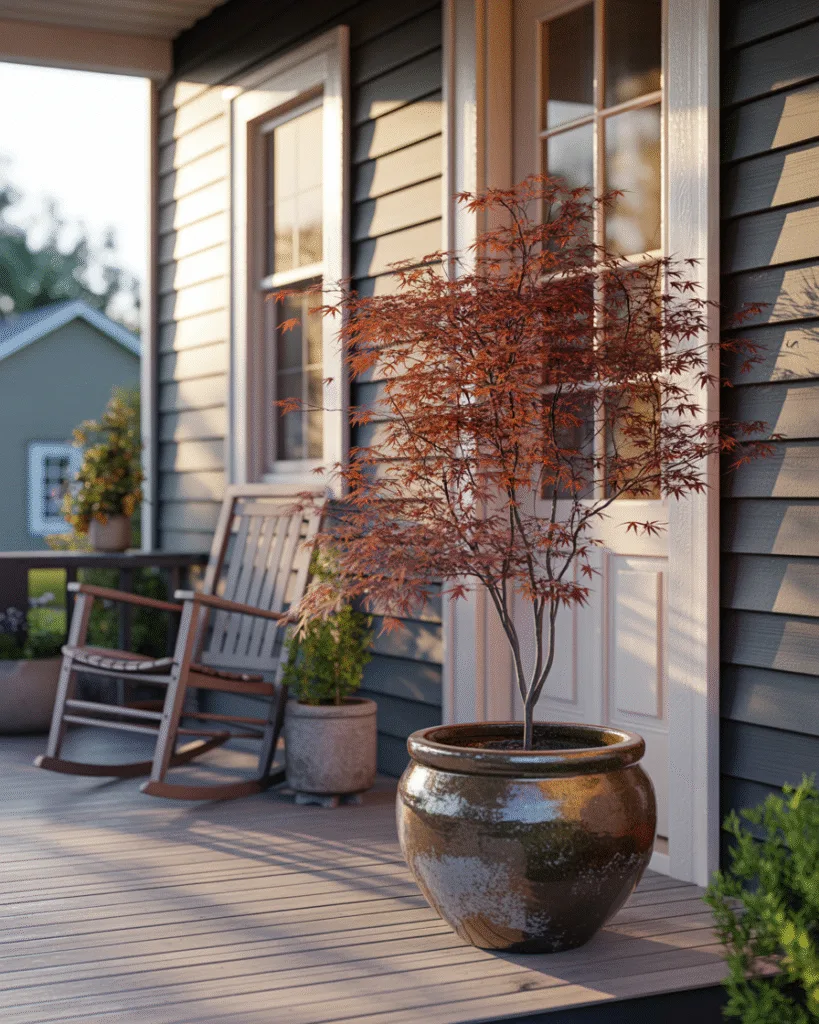
This is one of my favorite ideas—tuck a tree into a bed or pot right near the porch. It adds greenery without blocking your view and makes your outdoor sitting area feel more integrated with the yard.
Tips to make it work:
- Use compact or slow-growing trees like Japanese maple or bay laurel
- If planting in pots, make sure they’re big enough for root growth
- Keep it pruned so it doesn’t block your sitting area or windows
Style Bonus: Pick something with seasonal interest, like changing leaves or fragrant blooms.
12. Frame Windows with Narrow Trees
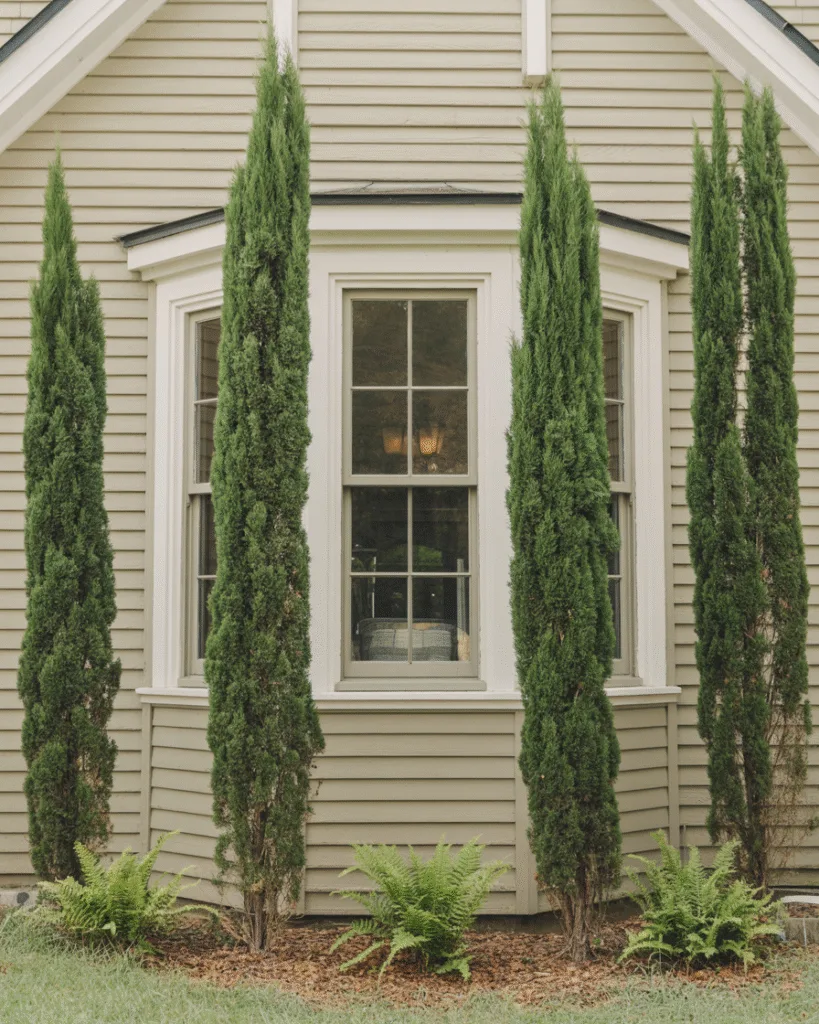
If you have big windows or a bay window that faces the front, planting a couple of vertical trees nearby helps frame the view beautifully without cutting off the light.
Here’s what to look for:
- Choose slender trees like Italian cypress, Eastern red cedar, or ornamental pears
- Keep them 3–5 feet away from the house for root safety
- Use mulch beds and edging to make it look neat and purposeful
Quick Tip: These trees are also great for blocking nosy neighbors without closing in the space.
13. Integrate a Tree into Your Mailbox Area
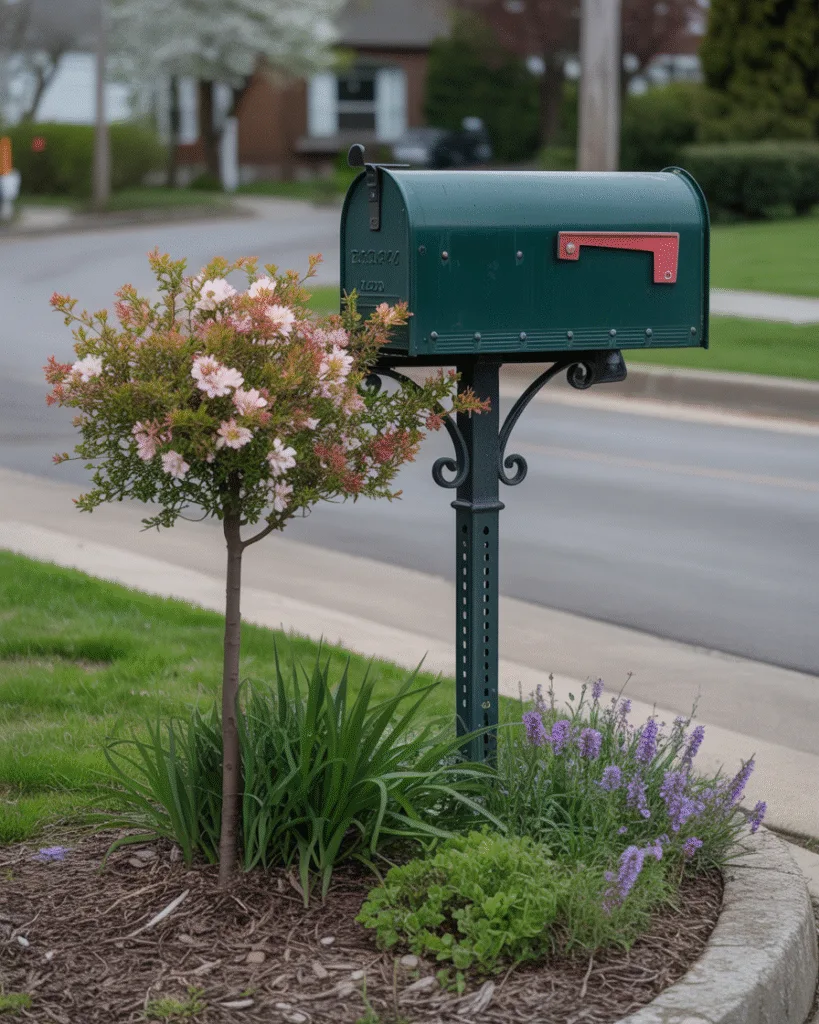
Yes, your mailbox can be more than just functional—it can actually look cute. Add a small flowering tree next to it, and you’ll instantly level up the charm factor.
What works great:
- Try dwarf flowering trees like lilac, crabapple, or fringe tree
- Plant on the side opposite the driveway to keep visibility clear
- Use low-growing shrubs or perennials underneath for color
Curb Appeal Boost: This adds personality right where people stop to look.
14. Anchor a Rock Garden or Dry Landscape with a Tree
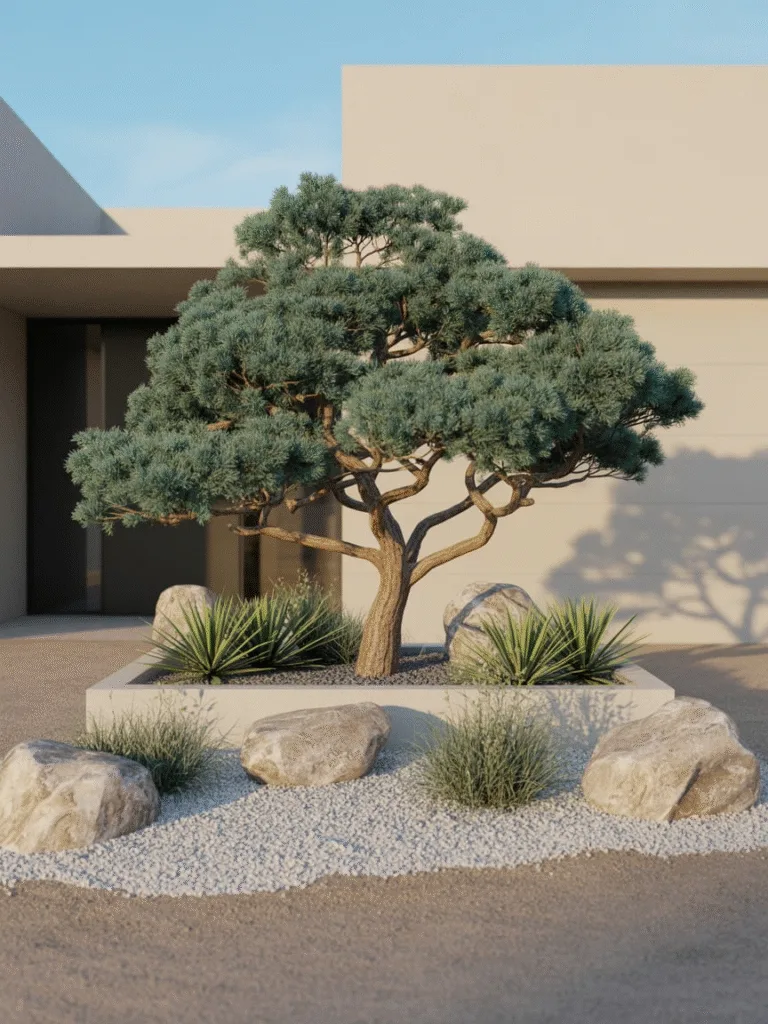
If you’re going low-maintenance or love a modern vibe, adding a sculptural tree to a rock garden is a total win. It breaks up the stones with soft texture and vertical interest.
What works:
- Use architectural trees like desert willow, olive tree (in warm zones), or blue atlas cedar
- Surround with gravel, boulders, or drought-tolerant plants
- Elevate with a small mound or berm for drama
Low-Water Tip: This setup is great for water-wise landscaping.
15. Create a Windbreak Buffer with Layered Trees

Live somewhere windy or noisy? Layering trees along the front property line can help block gusts and noise while still looking beautiful.
Plan it like this:
- Use a mix of evergreens, medium trees, and shrubs
- Start with tall trees like arborvitae or Leyland cypress in back
- Add layers of mid-sized and low plants in front for depth
Extra Benefit: Acts like a natural sound barrier and provides wildlife habitat.
Common Mistakes to Avoid
Trust me, these are lessons I’ve learned the hard way:
- Planting too close to the house: That baby tree will grow. Give it space.
- Ignoring mature size: Always check the final height and spread before planting.
- Not thinking about roots: Roots can crack sidewalks, driveways, and pipes if you’re not careful.
- Choosing messy trees: Some trees drop fruit, sap, or tons of leaves.
Quick List of Messy Culprits to Avoid:
- Bradford Pear
- Sweetgum (hello spiky balls!)
- Mulberry
FAQ Section
What is the best tree to plant in a small front yard?
Go for compact, ornamental trees like dogwood, redbud, or dwarf Japanese maple. They provide beauty without taking over your space or your view.
How far should a tree be from the house?
A good rule of thumb: At least 5-10 feet, depending on the tree’s mature spread. Big shade trees may need 20+ feet.
Can I plant a tree near a driveway?
Yes, but make sure it’s 6-10 feet away to prevent root damage. Pick trees with deep, non-invasive roots and prune regularly for visibility.
How do I pick the right tree for my front yard?
Start by considering your yard’s sun exposure, space, and soil type. Then choose a tree that fits your aesthetic and practical goals, shade, privacy, flowers, etc.
Should I plant trees in a straight line or staggered?
It depends on the vibe! Straight lines look formal and symmetrical. Staggered trees feel natural and relaxed.
Final Thoughts
Choosing where to plant your front yard trees doesn’t have to be stressful, think of it as adding character to your home’s handshake. When you plan with intention and pick trees that suit your space, you’re not just landscaping. You’re creating a space that feels like home before anyone even walks in the door.

